This website uses cookies so that we can provide you with the best user experience possible. Cookie information is stored in your browser and performs functions such as recognising you when you return to our website and helping our team to understand which sections of the website you find most interesting and useful.
The Impact of AI on the Job Market: A Balancing Act
Written by
NetizensOctober 23, 2024
6 min read
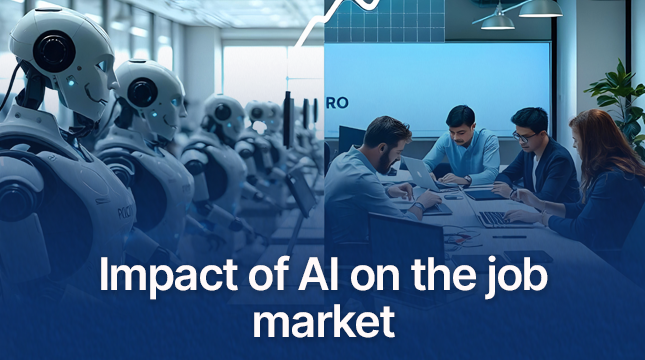
Imagine scrolling through job boards, applying to your first coding gig, only to hear that AI tools are already writing the code faster and cheaper. This isn’t sci-fi, it’s the reality for many young professionals in 2025. Goldman Sachs warns that widespread AI adoption could displace 6-7% of the U.S. workforce, potentially millions of jobs in automatable tasks. Yet, the story isn’t all doom: AI is also sparking high-wage roles and productivity surges. Understanding the difference between AI and AGI helps explain why automation affects some jobs faster than others.
In this post, we’ll unpack 2025 data from Stanford, PwC, and more to reveal AI’s dual impact, targeted disruptions in entry-level jobs versus explosive growth in AI-driven fields. We’ll explore adoption trends, job losses, opportunities, sector and demographic effects, and future projections. Is AI a job killer or creator? Let’s dive into the evidence.
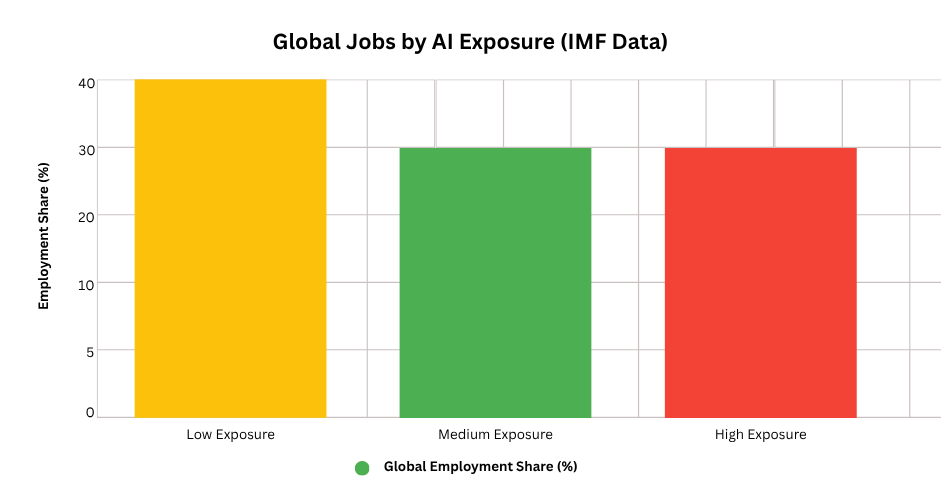
Current State of AI Adoption
AI’s workplace takeover is underway but far from complete. This early-stage adoption means impacts are emerging selectively, with AI often narrowing skill gaps and boosting productivity rather than replacing workers wholesale. You can read more about how AI is changing the world to understand its global transformation. As of mid-2025, fewer than 10% of U.S. firms report regular AI use, though larger enterprises show slightly higher rates per Stanford’s AI Index. Yale Budget Lab analyses confirm labor market stability, debunking fears of an “AI jobs apocalypse.”
Brookings Institution data highlights occupational shifts accelerating faster than during the internet boom, yet not dramatically so. This early-stage adoption means impacts are emerging selectively, with AI often narrowing skill gaps and boosting productivity rather than replacing workers wholesale.
AI Adoption Metrics (2025) | Value | Source |
U.S. Firms Using AI Regularly | <10% | Stanford AI Index |
Occupational Shift Speed | Faster than the Internet Era | Brookings |
Labor Market Stability | No Apocalypse | Yale Budget Lab |
The transition to AI-heavy workflows is gradual, setting the stage for both risks and rewards. But in sectors with high exposure, displacement is already biting.
Job Losses and Displacement
Although they are targeted, fears of mass unemployment are not unfounded. AI-related layoffs totaled 77,999 in H1 2025 alone, or 427 cuts per day on average. According to Stanford research, hiring freezes rather than layoffs are the main cause of the 13% relative employment decline for young workers (ages 22 to 25) in AI-vulnerable jobs like coding and call centers.
Since 2022, the St. Louis Fed has linked changes from seasonal norms to an increase in unemployment in high-exposure occupations, such as computer occupations, where 80% of jobs are automatable. This is amplified by X discussions: AI delays recovery, slows job matching, and causes initial layoffs.
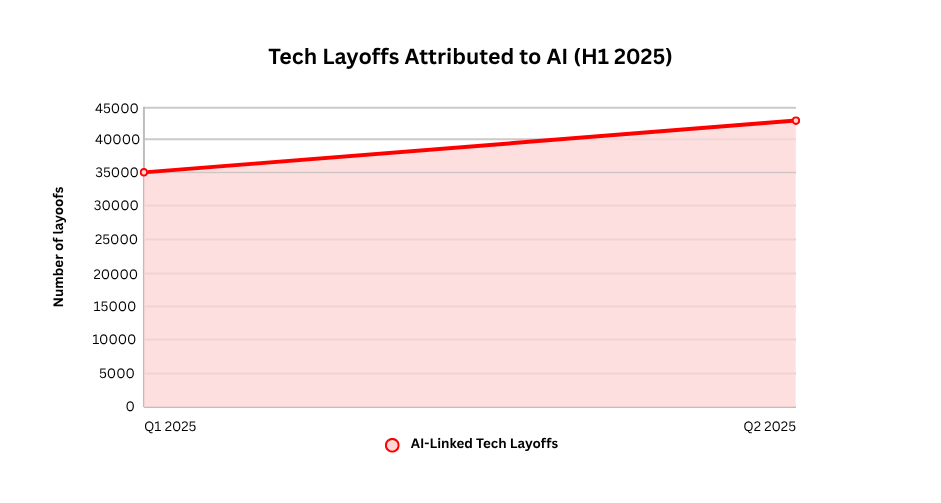
Key Displacement Stats | Value | Source |
H1 2025 Tech Layoffs | 77,999 | Demandsage |
Young Worker Decline | 13% | Stanford |
Youth Unemployment (U.S.) | 17% | Revelio Labs |
These hits are selective, sparing seniors but hammering juniors.
Opportunities and Job Creation
AI destroys but also builds. PwC’s 2025 Global AI Jobs Barometer, scanning nearly a billion ads, finds AI inflating wages and productivity, even in automatable jobs. AI engineer postings surged 143%, content creators 134%, with median salaries at $156,998 (up 0.8% QoQ per Veritone).
For professionals adapting to automation, exploring the best AI tools to help you work and create can unlock new productivity and creativity opportunities.
The U.S. claims 29.4% of global AI jobs in tech, up 18.8% YoY (Aura). Demand for “AI integrators” exceeds 10,000 postings, augmenting senior roles per X insights.
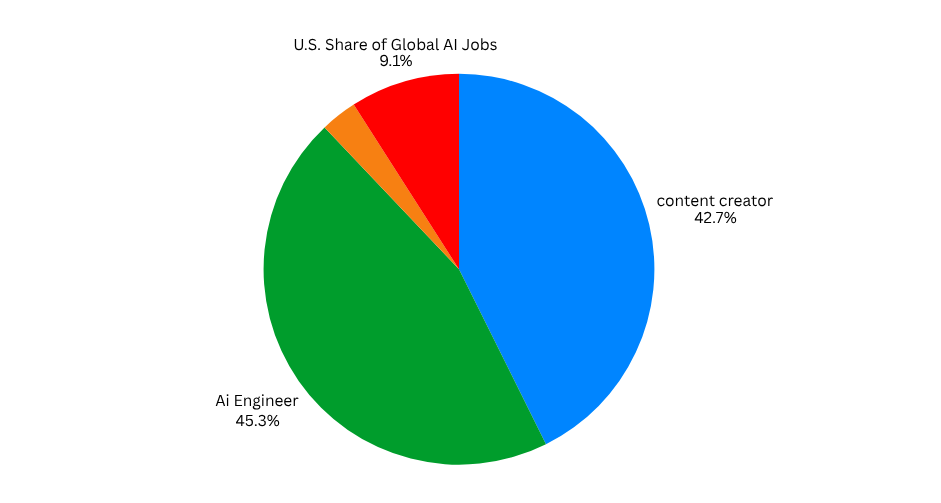
Emerging fields like AI ethics and oversight signal net gains for adapters.
Sector-Specific and Demographic Impacts
The impact of AI varies. By 2025, healthcare coding will reach 40%, while banking and software tasks will be 40–60% automated (BLS notes robo-advisors challenging advisors). IMF data: 60% exposure in advanced economies vs. 40% emerging. By 2030, 30–50% of roles in media and retail may be eliminated.
Juniors experience a 7.7% decrease in hiring at AI companies, while middle-tier graduates have the worst results. Low-income groups and women in administration are at higher risk (46% exposure).
Inequities demand targeted retraining.
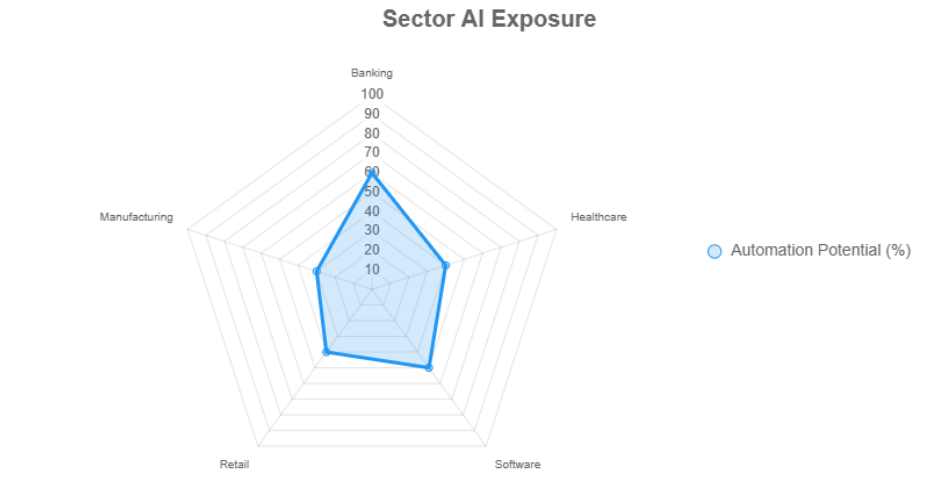
Future Outlook and Recommendations
By 2030, Oxford predicts 20 million global manufacturing losses; 14% of workers may switch careers. Yet BLS forecasts growth in AI oversight, potentially 100,000+ U.S. jobs by 2026.
Action steps:
- Upskill: Master AI tools via Coursera or bootcamps. Learning the benefits of making AI chatbots by integrating GPT-3 can be a great starting point for developers and marketers looking to specialize in AI applications.
- Policy: Advocate retraining programs.
- Adapt: View AI as an augmentor; proactivity trumps fear.
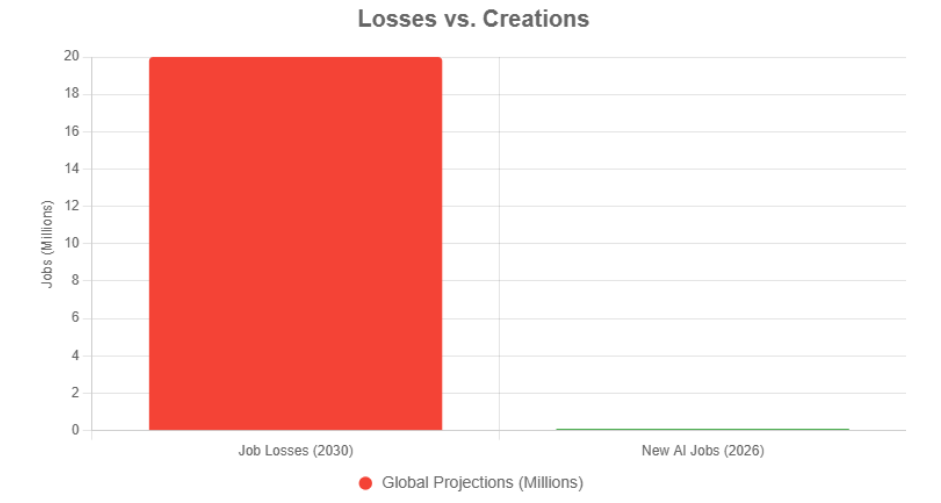
Conclusion
AI in 2025 disrupts entry-level roles but fuels productivity and new opportunities, with the IMF’s exposure gaps underscoring adaptation’s urgency. Embrace it as a tool, upskill today. What’s your take on AI in your career?
FAQs
1. Will AI cause mass unemployment in 2025?
No, there hasn’t been any significant disruption to the labor market since ChatGPT’s launch, according to Yale Budget Lab’s 2025 analysis. Automation will replace 6–7% of the U.S. workforce, according to Goldman Sachs, but this will only affect certain jobs (like entry-level tech), which will be compensated for by increased productivity and new positions.
2. How many jobs has AI already displaced in 2025?
342 companies lost 77,999 tech jobs to AI in H1 2025 (Demandsage). Due primarily to hiring freezes rather than mass layoffs, Stanford reports a 13% decline in employment for young workers (ages 22 to 25) in exposed fields like coding.
3. Which jobs are most at risk from AI?
High-exposure jobs include banking/software tasks (40–60%), computer/math occupations (80% automatable, according to the St. Louis Fed), and healthcare coding (40% by 2025, BLS). The hardest hit are entry-level jobs in retail, media, and administration (46% exposure, frequently affecting women).
4. Are there new jobs being created by AI?
Yes, PwC’s 2025 Barometer shows AI skills commanding a 56% wage premium. According to Veritone Q1 2025, jobs such as AI engineers increased by +143%, with median salaries of $156,998. The United States accounts for 29.4% of global postings for ethics overseers and AI integrators, indicating a boom in demand for these professionals (Aura).
5. How exposed is the global job market to AI?
According to IMF data, about 60% of jobs in developed economies and 40% of jobs in emerging markets are exposed to AI. While BLS projects growth in AI-augmented fields and the potential for over 100,000 U.S. jobs by 2026, Oxford Economics projects 20 million manufacturing losses by 2030.
6. Why are young workers hit hardest by AI?
According to Stanford research, hiring in entry-level positions that are vulnerable to AI (like call centers) has decreased by 13%. Seniors gain from augmentation, while juniors manage codified tasks that AI excels at. According to Revelio Labs’ 17% youth unemployment rate, middle-tier graduates bear the brunt of this.
7. Is AI adoption widespread in companies yet?
Although broader experimentation reached 78% in 2024, the Stanford AI Index 2025 reports that only about 9% of U.S. firms regularly use AI for production. Big businesses take the lead; according to Brookings, occupational shifts are happening more quickly than in the Internet age.
8. How can I protect my career from AI disruption?
Improve your knowledge of AI tools (such as Coursera courses) and concentrate on supplementary abilities like creativity, ethics, and integration. Workers with AI skills see wage increases even in automatable jobs, according to PwC, which suggests considering AI as an augmentor. Promote retraining regulations.
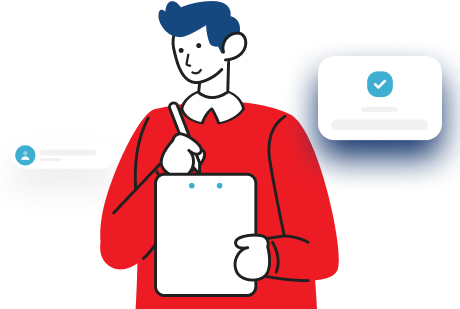
Let's Start Your Project
Get free consultation for your digital product idea to turn it into reality!
Get StartedRelated Blog & Articles
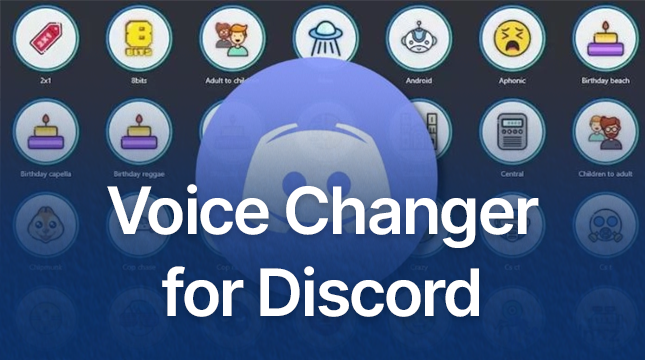
Netizens
July 1, 2024
Voice Changer for Discord
Discord has become a household name in the world of online communication, particularly among gamers. This

Netizens
May 22, 2024
The Full Stop (.) in Coding: The Tiny Symbol That Powers Everything
You’ve probably seen it thousands of times in code, that tiny full stop (.) sitting quietly

Netizens
January 20, 2025
How Businesses Can Save Energy with Smart IT Solutions
The overreliance on non-renewable energy sources for business is evident in global warming and the depletion




